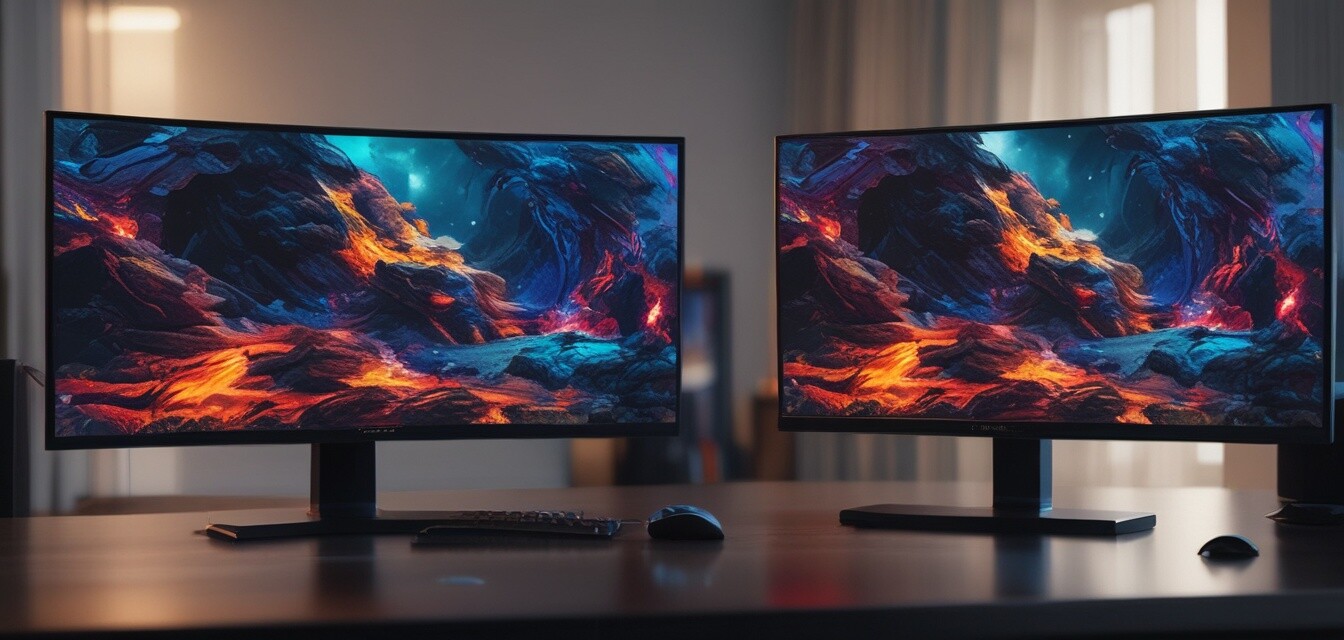
OLED vs. QLED: Which Gaming Monitor Reigns Supreme?
Key Takeaways
- Both OLED and QLED monitors offer distinct advantages for gaming.
- OLED monitors provide deeper blacks and better contrast.
- QLED monitors are brighter and often more affordable.
- Your gaming environment and preferences will heavily influence your choice.
- Understand the specifications to make an informed decision.
Choosing the right gaming monitor can significantly enhance your gaming experience. In the battle of OLED vs. QLED, both technologies present compelling arguments for different types of gamers. In this article, we will break down the features, advantages, and disadvantages of both display types to help you make the best choice for your gaming setup.
Understanding OLED Technology
OLED, or Organic Light Emitting Diode, technology uses organic compounds to produce light. Each pixel emits its own light, which enables stunning contrast ratios and vibrant colors.
Advantages of OLED
- Superior color accuracy and vibrancy
- True blacks, as individual pixels can turn off completely
- Wide viewing angles
Disadvantages of OLED
- Risk of burn-in with static images
- Generally higher price point compared to QLED
Understanding QLED Technology
QLED, or Quantum Dot LED, technology involves a layer of quantum dots that enhance color and brightness. While it still relies on an LED backlight, the quantum dots offer a significant improvement in color accuracy.
Advantages of QLED
- Higher brightness levels, making it suitable for well-lit rooms
- No risk of burn-in
- Typically lower price and more budget-friendly options
Disadvantages of QLED
- Blacks are not as deep as OLED
- Viewing angles are narrower compared to OLED
Comparison Table: OLED vs. QLED
| Feature | OLED | QLED |
|---|---|---|
| Black Levels | True black | Greyish black |
| Brightness | Good | Excellent |
| Color Accuracy | Exceptional | Very good |
| Viewing Angles | Wide | Narrower |
| Price | Higher | Lower |
| Risk of Burn-In | Yes | No |
Who Should Choose OLED?
If you prioritize color vibrancy and deep black levels, and you primarily game in a dark room, an OLED monitor will enhance your experience significantly. The remarkable contrast and color reproduction are ideal for immersive gaming environments.
Who Should Choose QLED?
On the other hand, if you often play games in brighter environments or are looking for a cost-effective solution, QLED monitors might be the better choice for you. The higher brightness and no risk of burn-in makes it a practical option for casual gamers.
Conclusion
Ultimately, the choice between OLED and QLED depends on your gaming preferences, setup, and budget. Both technologies offer remarkable capabilities, and understanding their differences will empower you to make an informed decision that optimizes your gaming experience.
Pros of OLED
- Unmatched color quality
- Excellent contrast performance
- Wider viewing angles
Cons of OLED
- Higher price point
- Potential burn-in issues
Pros of QLED
- Brighter displays
- Budget-friendly options
- No burn-in risk
Cons of QLED
- Less deep blacks
- Narrower viewing angles
Further Reading
For more insights into gaming monitors, check out our Buying Guides for tips that help you choose the right monitor based on your specific needs. You may also want to visit our page on 4K OLED Gaming Monitors to see some great options available in the market. Explore our Budget-Friendly OLED Gaming Monitors category for economical choices without compromising quality. If you’re into ultra-wide gaming, don’t miss our section on Ultrawide OLED Gaming Monitors. To compare different models directly, check our Product Comparisons for a side-by-side look at various monitors.